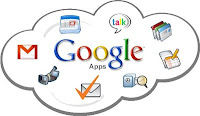| English: Podcast or podcasting icon Français : Icône pour les podcasts ou la baladodiffusion (Photo credit: Wikipedia) |
RSS is a format for delivering regularly changing web content. Resources (audio or video) placed on the web are given an RSS Feed. This RSS Feed enables users to subscribe using RSS readers (e.g., iTunes, iGoogle). A user only needs to open the RSS reader and it will automatically check and load new episodes from the subscribed podcasts.
It is important to remember that it is the RSS that makes it podcasting. It is a form of automated delivery or subscription. You can use RSS for audio files or video files. Blogs use RSS for subscription as well. You might even say that Blogs are podcasted using the model we are discussing.
RSS in Plain English
Educational Podcasting
Podcasting is a medium that teachers can use for teaching ideas and students can use for sharing their knowledge. It provides a medium for organizing and sharing resources. Students can create projects that can be posted to the web and available for parents, grandparents, aunts, uncles and even university students to enjoy.
Watch each of these 3 10-minute videos (not vodcasts) to hear how educators use podcasts.
- Podcasting in Education 1 - What is Podcasting? How to create a podcast using Garageband 3. (You will not be required to use Garageband to do your assignment, but it is an interesting demonstration that can be generalized to other tools.)
- Podcasting in Education 2 - 7th grade Language Arts middle school teacher from Wisconsin. She uses podcasting for her Integrated Thematic Curriculum.
- Podcasting in Education 3 - Middle School Principal from Georgia sharing how use podcasting to reach out to the community.
- Why Some Educational Podcasts are Engaging and Others are Not
- Casting Glossary
- Learning in Hand - Tony Vincent



















